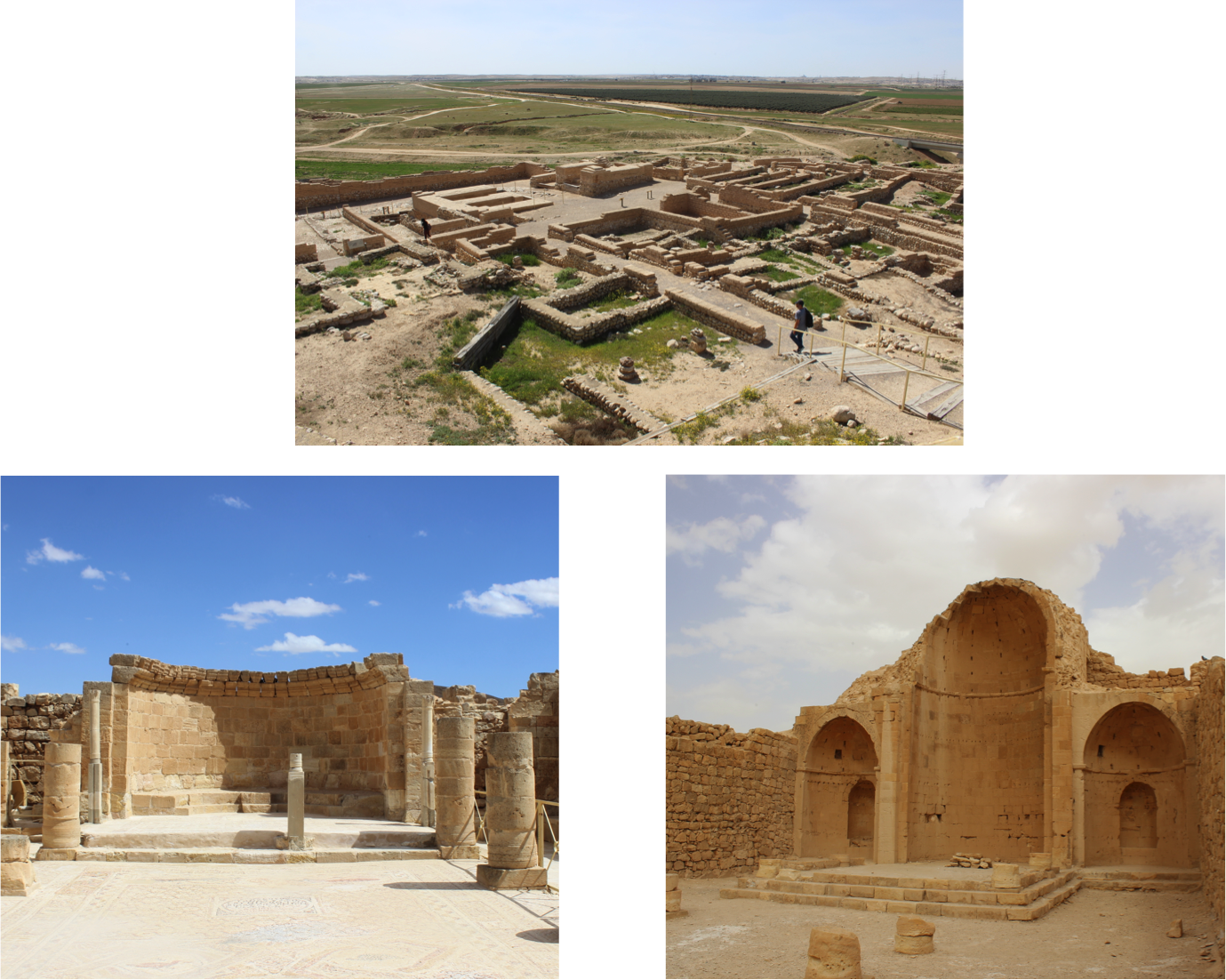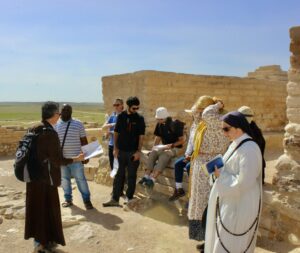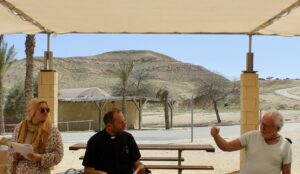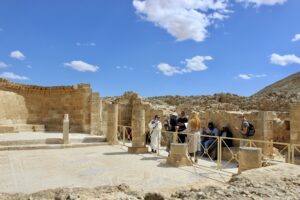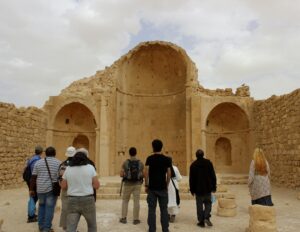Guided by Friar Yunus Demirci, the fifteen of students enrolled in the topography course set off to discover the Negev desert!
3 busy days, ponctuated with 2 nights in a camp in the desert, immersion in the life of Bedouins guaranteed!
The first day of the trip was dedicated to 3 sites : Beer Sheva, Mamshit & Shivta.
Beer Sheva first, declared National Park in 1986, whose name means “the well of the seven”, or “the well of the oath”. This site was presented by Mitchka, a doctoral fellow of the Academy of Inscriptions and Belles Lettres.
“Beer Sheva is a site excavated from 1969 to 1976 by the Institute of Archaeology of Tel Aviv University under the direction of Y. Aharoni and then Z. Aharoni and then Z. Herzog. The site was occupied from the Chalcolithic period to the Ottoman period. It was an important urban centre mainly during the Iron Age, then with the (re-)construction of fortresses during the Persian, Hellenistic, Herodian, Roman and Arab periods. The restoration of the site takes into account the remains of the 8th century BC.
The surrounding wall with its outer and inner gates, the pavement of the alleys, a storage structure, the governor’s palace, the four-space houses, and the cistern are very impressive. The presence of an altar discovered during the excavations, later replaced and integrated into the wall of the storage building, is also noteworthy. A reproduction of this altar is on display at the entrance to the site.”
The day continued at Mamshit, a site presented by Ludovic and Leanaya.
Ludovic says: “Mamshit is a Nabatean city, which is located on the incense route in the Negev desert. It developed in the 1st century BC and went through 3 periods.
During the first, it developed thanks to the prosperity of the spice trade, and it was during this period that most of the houses were built. Two typical stables have been found.
After the year 106, the Roman domination begins with the construction of a Roman road, military protection, baths and a market.
The Byzantine period saw the construction of two churches, one a monastery built by Nilus, the other a cathedral with a cross-shaped baptistery.
These basilica churches have beautiful mosaics, an atrium used for liturgical processions and, more prosaically, for collecting rainwater in large cisterns.”
Shivta finally, to close the day. An ancient Nabataean village from the 1st century AD. Little by little, through the centuries, Christianity gained the city. Two churches were built. One of them was transformed into a mosque under Arab domination in the 7th century, the mihrab was carved in one of the walls of the baptistery. Exploring the remains of this city allows us to understand the importance of the water collection system, in order to allow the inhabitants to live there.
Discover our trip in pictures here !
